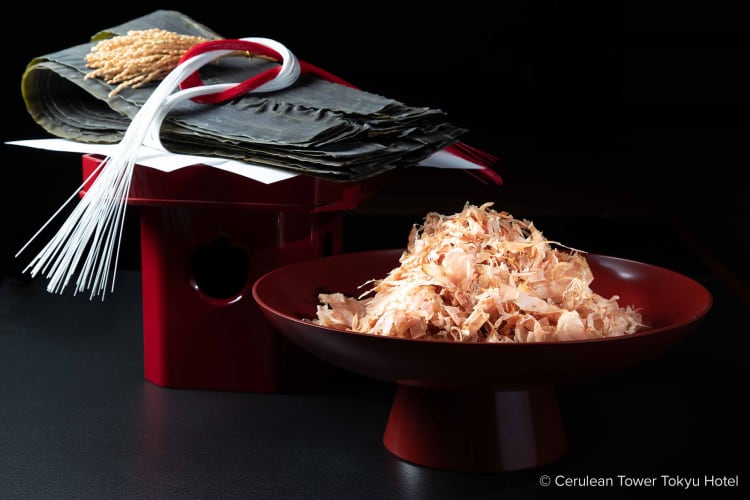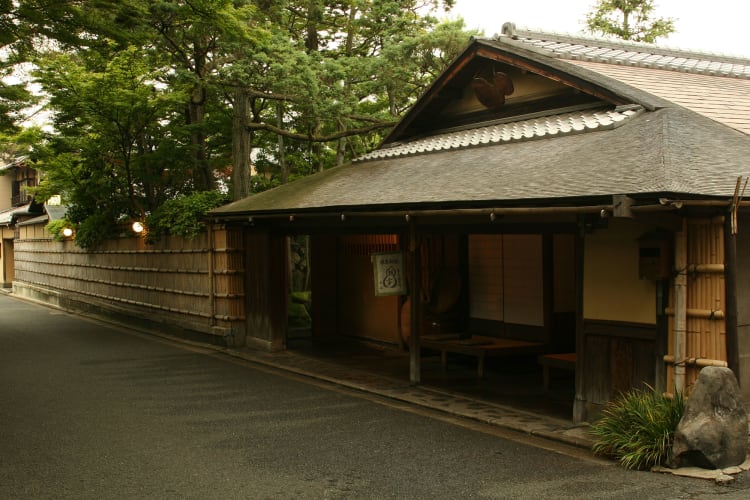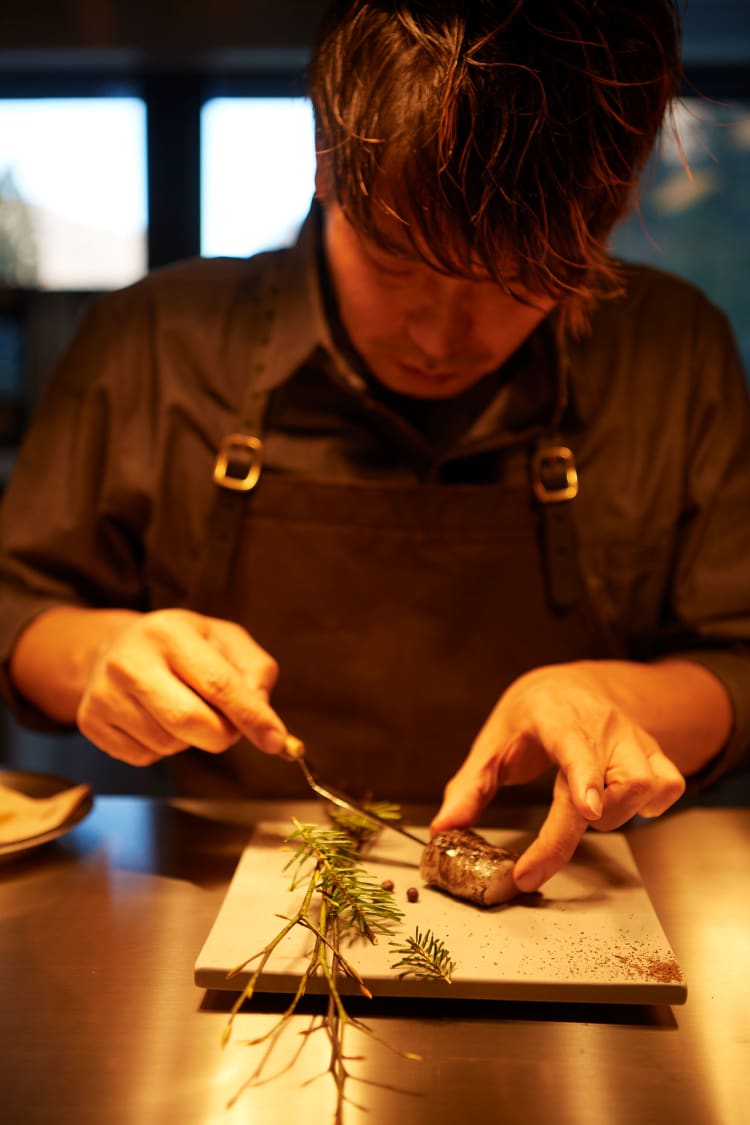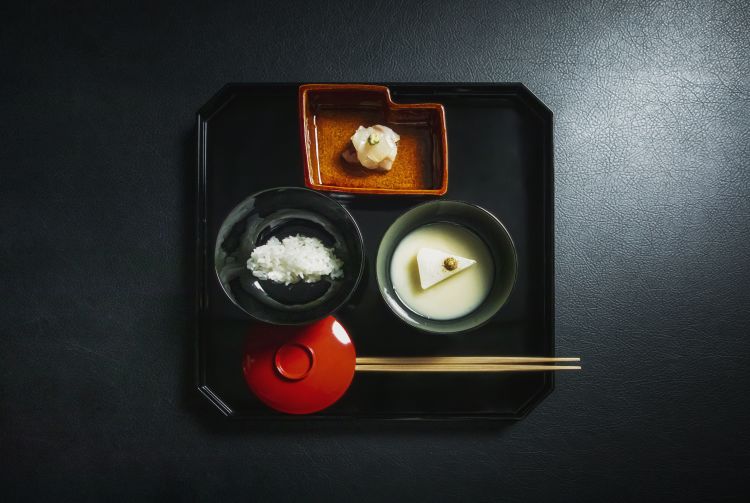Discovering Japan Through Flavor
Washoku (Japanese cuisine) has become a global favorite, with sushi, tempura, and ramen among the dishes already delighting gastronomic enthusiasts around the world. However, only in Japan can you truly appreciate washoku's amazing diversity, and its essential contribution to the island nation’s identity.
Designated a UNESCO Intangible Cultural Heritage in 2013, wa (Japan/harmony) and shoku (food/to eat) combine to create dishes of great depth and variety that draw attention to the natural goodness of ingredients. Dashi broth has abundant umami, the “5th flavor” that makes Japanese food instantly recognizable, and sophisticated fermentation techniques produce outstanding ingredients like soy sauce and miso.
One of the key characteristics of washoku is respect for the intrinsic taste of the ingredients, ensuring that the natural sweetness of a tomato or the rich flavor of a potato comes through, without adding seasonings that could mar the harmony of each dish. Japan’s deep respect for nature is clearly present in the way ingredients’ inherent qualities are the star of the meal, a beautiful simplicity that honors and elevates the country’s bounty.
Dashi is what gives washoku its subtle yet unmistakable depth of flavor. Traditionally dashi is made by gently boiling umami-rich ingredients such as konbu (dried kelp), or katsuobushi (dried bonito, made from smoked then fermented skipjack tuna) in water. The clear, fragrant broth packs a notable punch while still remaining light and healthy. For centuries the umami in dashi has been the secret to creating delicious, satisfying dishes without the need for sugar or fats, which were once a luxury most people could not regularly afford.

Fermentation is another pillar of washoku, as Japan has an ideal climate for supporting the beneficial bacteria required for the process. This has resulted in a huge variety of fermentation traditions and techniques to flourish across the country, from pickles to essential seasonings like miso, soy sauce, sake and mirin (sweet rice wine).
Miso soup, which will often accompany your meals in Japan, is perhaps one of the most famous examples. Miso is a protein and amino acid-rich paste made by fermenting steamed soybeans, salt and rice inoculated with koji spores. Producing miso traditionally takes a year or more, following the cycle of the seasons to support the fermentation process. The careful process results in this complex, umami-filled seasoning that is both healthy and deeply flavorful.
While Japan's love of seasonal flavors is evident even in everyday dishes such as a teishoku (set meals) or a bowl of noodles, the ultimate expression of washoku is kaiseki-ryori, currently a luxury cuisine that can be traced to simple dishes served at tea gatherings.
Originally a light meal of ichi-ju san-sai, or “one soup and three side dishes,” over the years chefs have added their own innovations and kaiseki-ryori has evolved into an elegant meal featuring a series of edible works of art served in a specific order, each perfectly presented on beautiful dishes to match the occasion. Often served at traditional restaurants known as ryotei, kaiseki-ryori is a chance to experience the epitome of Japanese-style fine dining, where every aspect – from service and décor to cuisine – is orchestrated to create a calm atmosphere that allows you to appreciate the artfulness of each dish.
One of the best places to enjoy refined kaiseki cuisine is Kyoto. Among the many long-established restaurants there is Hyotei, near Nanzenji Temple. They have been welcoming guests for over 400 years and their commitment to satisfying the discerning diner has contributed to Hyotei’s quality since the days of the samurai. Every dish is a carefully crafted sensory delight that plays its part in a symphony of flavors and textures unfolding over the course of a meal.

Chefs pursuing a culinary ideal do not rest on their laurels. Japan is well known for embracing new ideas and turning them into something unique. Washoku, too, exemplifies this approach, and its success is evident in the profusion of Michelin-starred restaurants around the country.
L’evo in Toyama Prefecture offers an excellent example. Drawing on a deep understanding of culinary traditions and even foraging in the forest himself, Chef Taniguchi transforms locally sourced ingredients into sublime, avant-garde dishes that embody a sense of place, all the way down to the fabric used for the menu and crockery created by artisans of Toyama.

While in Japan, you are sure to learn how sake adds an extra dimension and bouquet to dining pleasure. Various brewing techniques and each brewery’s choice of rice, water, and yeast contribute to a vast and excellent array of options from across Japan. Generations of brewers have honed the art of producing a drink that can be paired with many different dishes and types of cuisine, just as one would with wine. By combining ancestral knowledge with innovative technology, they have created increasingly sophisticated and delicious versions of a thoroughly natural beverage whose principal ingredients are rice and water.
Sake pairs beautifully with the umami goodness and fermented flavors that distinguish washoku. With about 1500 breweries dotted around Japan, wherever you go you will find varieties that showcase a sense of terroir. In Fukui Prefecture, for example, Kokuryu, a brewery with two centuries of history, specializes in small-batch sake made from the finest rice and pure water from Mt. Hakusan.

You could spend a lifetime exploring Japan's culinary cornucopia and still encounter unforgettable new variations on washoku basics. There's just so much to discover, and of course, to savor!






